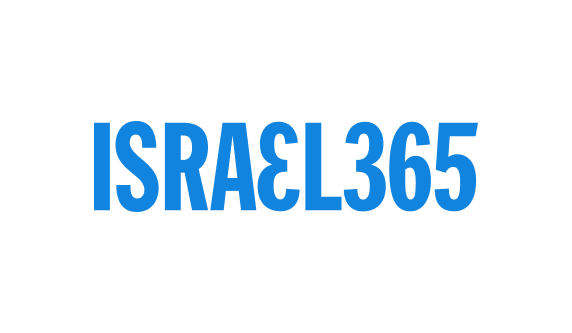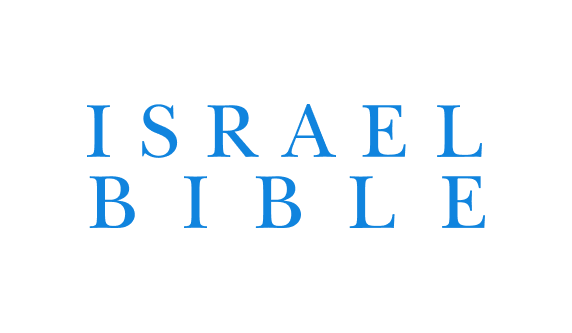
TORAH
NEVI'IM
KETUVIM
Chapter 42
Translation and Transliteration of
Listen to this chapter in Hebrew:
- Commentary
- Buy E-book
- Buy the Israel Bible
1He took me out, by way of the northern gate, into the outer court, and he led me [westward] up to a complex of chambers that ran parallel to the northern ends of the vacant space and the structure.
אוַיּוֹצִאֵנִי אֶל־הֶחָצֵר הַחִיצוֹנָה הַדֶּרֶךְ דֶּרֶךְ הַצָּפוֹן וַיְבִאֵנִי אֶל־הַלִּשְׁכָּה אֲשֶׁר נֶגֶד הַגִּזְרָה וַאֲשֶׁר־נֶגֶד הַבִּנְיָן אֶל־הַצָּפוֹן׃
2The width of its fa³ade—its north side, the one from which it was entered—was 100 amot, and its depth was 50 amot.
באֶל־פְּנֵי־אֹרֶךְ אַמּוֹת הַמֵּאָה פֶּתַח הַצָּפוֹן וְהָרֹחַב חֲמִשִּׁים אַמּוֹת׃
3At right angles to the 20 amot of the inner court and to the pavement of the outer court, the complex rose ledge by ledge in three tiers.
גנֶגֶד הָעֶשְׂרִים אֲשֶׁר לֶחָצֵר הַפְּנִימִי וְנֶגֶד רִצְפָה אֲשֶׁר לֶחָצֵר הַחִיצוֹנָה אַתִּיק אֶל־פְּנֵי־אַתִּיק בַּשְּׁלִשִׁים׃
4There was an areaway, 10 amot wide and a road of one amah, running along the inner-court side of the chamber complex, but its entrances were on its north side.
דוְלִפְנֵי הַלְּשָׁכוֹת מַהֲלַךְ עֶשֶׂר אַמּוֹת רֹחַב אֶל־הַפְּנִימִית דֶּרֶךְ אַמָּה אֶחָת וּפִתְחֵיהֶם לַצָּפוֹן׃
5Here its upper chambers were cut back, because ledges took away from them as construction proceeded backward from the bottom ones and then from the middle ones.
הוְהַלְּשָׁכוֹת הָעֶלְיוֹנֹת קְצֻרוֹת כִּי־יוֹכְלוּ אַתִּיקִים מֵהֵנָה מֵהַתַּחְתֹּנוֹת וּמֵהַתִּכֹנוֹת בִּנְיָן׃
6For they were arranged in three tiers, and they had no columns like those of the chambers in the courts. That is why the rise proceeded by stages: from the ground, from the bottom ones, and from the middle ones.
וכִּי מְשֻׁלָּשׁוֹת הֵנָּה וְאֵין לָהֶן עַמּוּדִים כְּעַמּוּדֵי הַחֲצֵרוֹת עַל־כֵּן נֶאֱצַל מֵהַתַּחְתּוֹנוֹת וּמֵהַתִּיכֹנוֹת מֵהָאָרֶץ׃
7In the outer court, a wall 50 amot long ran parallel to the chamber complex up to the chambers in the outer court;
זוְגָדֵר אֲשֶׁר־לַחוּץ לְעֻמַּת הַלְּשָׁכוֹת דֶּרֶךְ הֶחָצֵר הַחִצוֹנָה אֶל־פְּנֵי הַלְּשָׁכוֹת אָרְכּוֹ חֲמִשִּׁים אַמָּה׃
8for the chambers in the outer court were themselves 50 amot deep, thus completing 100 amot alongside the edifice.
חכִּי־אֹרֶךְ הַלְּשָׁכוֹת אֲשֶׁר לֶחָצֵר הַחִצוֹנָה חֲמִשִּׁים אַמָּה וְהִנֵּה עַל־פְּנֵי הַהֵיכָל מֵאָה אַמָּה׃
9Thus, at the foot of that complex of chambers ran a passage—of a width set by the wall in the outer court—which one entered from the east in order to gain access to them from the outer court.*
טומתחתה לשכות [וּמִתַּחַת] [הַלְּשָׁכוֹת] הָאֵלֶּה המבוא [הַמֵּבִיא] מֵהַקָּדִים בְּבֹאוֹ לָהֵנָּה מֵהֶחָצֵר הַחִצֹנָה׃
10There was another chamber complex to the east of the vacant space and the structure,
יבְּרֹחַב גֶּדֶר הֶחָצֵר דֶּרֶךְ הַקָּדִים אֶל־פְּנֵי הַגִּזְרָה וְאֶל־פְּנֵי הַבִּנְיָן לְשָׁכוֹת׃
11likewise with a passage in front—just like the complex on the north side, with which this one agreed in width and depth and in the exact layout of its exits and entrances.
יאוְדֶרֶךְ לִפְנֵיהֶם כְּמַרְאֵה הַלְּשָׁכוֹת אֲשֶׁר דֶּרֶךְ הַצָּפוֹן כְּאָרְכָּן כֵּן רָחְבָּן וְכֹל מוֹצָאֵיהֶן וּכְמִשְׁפְּטֵיהֶן וּכְפִתְחֵיהֶן׃
12Accordingly, the entrances to the chamber complex on the south side were approached from the east by the entrance at the head of the corresponding passage along the matching wall.
יבוּכְפִתְחֵי הַלְּשָׁכוֹת אֲשֶׁר דֶּרֶךְ הַדָּרוֹם פֶּתַח בְּרֹאשׁ דָּרֶךְ דֶּרֶךְ בִּפְנֵי הַגְּדֶרֶת הֲגִינָה דֶּרֶךְ הַקָּדִים בְּבוֹאָן׃
13And he said to me, “The northern chambers and the southern chambers by the vacant space are the consecrated chambers in which the Kohanim who have access to Hashem shall eat the most holy offerings. There they shall deposit the most holy offerings—the meal offerings, the sin offerings, and the guilt offerings, for the place is consecrated.
יגוַיֹּאמֶר אֵלַי לִשְׁכוֹת הַצָּפוֹן לִשְׁכוֹת הַדָּרוֹם אֲשֶׁר אֶל־פְּנֵי הַגִּזְרָה הֵנָּה לִשְׁכוֹת הַקֹּדֶשׁ אֲשֶׁר יֹאכְלוּ־שָׁם הַכֹּהֲנִים אֲשֶׁר־קְרוֹבִים לַיהֹוָה קָדְשֵׁי הַקֳּדָשִׁים שָׁם יַנִּיחוּ קָדְשֵׁי הַקֳּדָשִׁים וְהַמִּנְחָה וְהַחַטָּאת וְהָאָשָׁם כִּי הַמָּקוֹם קָדֹשׁ׃
14When the Kohanim enter, they shall not proceed from the consecrated place to the outer court without first leaving here the vestments in which they minister; for the [vestments] are consecrated. Before proceeding to the area open to the people, they shall put on other garments.”
ידבְּבֹאָם הַכֹּהֲנִים וְלֹא־יֵצְאוּ מֵהַקֹּדֶשׁ אֶל־הֶחָצֵר הַחִיצוֹנָה וְשָׁם יַנִּיחוּ בִגְדֵיהֶם אֲשֶׁר־יְשָׁרְתוּ בָהֶן כִּי־קֹדֶשׁ הֵנָּה ילבשו [וְלָבְשׁוּ] בְּגָדִים אֲחֵרִים וְקָרְבוּ אֶל־אֲשֶׁר לָעָם׃
15When he had finished the measurements of the inner Temple [area], he led me out by way of the gate which faces east, and he measured off the entire area.
טווְכִלָּה אֶת־מִדּוֹת הַבַּיִת הַפְּנִימִי וְהוֹצִיאַנִי דֶּרֶךְ הַשַּׁעַר אֲשֶׁר פָּנָיו דֶּרֶךְ הַקָּדִים וּמְדָדוֹ סָבִיב סָבִיב׃
16He measured the east side with the measuring rod, 500 [amot]—in rods, by the measuring rod. He turned
טזמָדַד רוּחַ הַקָּדִים בִּקְנֵה הַמִּדָּה חֲמֵשׁ־אמות [מֵאוֹת] קָנִים בִּקְנֵה הַמִּדָּה סָבִיב׃
17[and] measured the north side: 500 [amot]—in rods, by the measuring rod. He turned
יזמָדַד רוּחַ הַצָּפוֹן חֲמֵשׁ־מֵאוֹת קָנִים בִּקְנֵה הַמִּדָּה סָבִיב׃
18[and] measured the south side: 500 [amot]—in rods, by the measuring rod.
יחאֵת רוּחַ הַדָּרוֹם מָדָד חֲמֵשׁ־מֵאוֹת קָנִים בִּקְנֵה הַמִּדָּה׃
19Then he turned to the west side [and] measured it: 500 amot—in rods, by the measuring rod.
יטסָבַב אֶל־רוּחַ הַיָּם מָדַד חֲמֵשׁ־מֵאוֹת קָנִים בִּקְנֵה הַמִּדָּה׃
20Thus he measured it on the four sides; it had a wall completely surrounding it, 500 [amot] long on each side, to separate the consecrated from the unconsecrated.
l'-ar-BA ru-KHOT m'-da-DO KHO-mah LO sa-VEEV sa-VEEV O-rekh kha-MAYSH may-OT v'-RO-khav kha-MAYSH may-OT l'-hav-DEEL BAYN ha-KO-desh l'-KHOL
כלְאַרְבַּע רוּחוֹת מְדָדוֹ חוֹמָה לוֹ סָבִיב סָבִיב אֹרֶךְ חֲמֵשׁ מֵאוֹת וְרֹחַב חֲמֵשׁ מֵאוֹת לְהַבְדִּיל בֵּין הַקֹּדֶשׁ לְחֹל׃
![]() 42:20 To separate the consecrated from the unconsecrated
42:20 To separate the consecrated from the unconsecrated
Yechezkel’s vision of the rebuilt Beit Hamikdash concludes with a description of its surrounding walls. These walls form a perfect square, five-hundred cubits on each side, and serve to distinguish between the holiness of Har Habayit, the Temple Mount, and the rest of Yerushalayim, where sacrifices could not be offered. The Mishna (Keilim 1:6-9) teaches that the Land of Israel possesses ten ascending levels of holiness, starting from the outskirts of the country and culminating with the Holy of Holies, the resting place of God’s Divine Presence.







